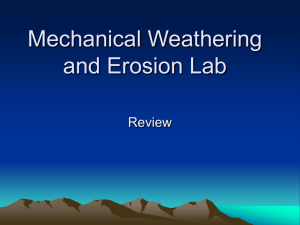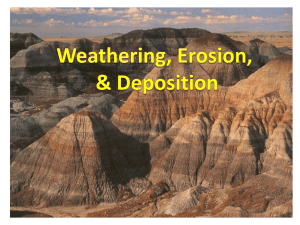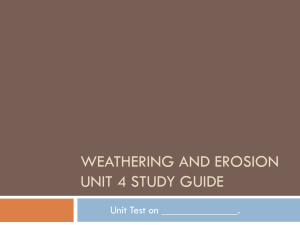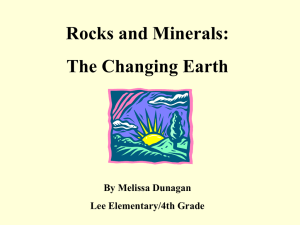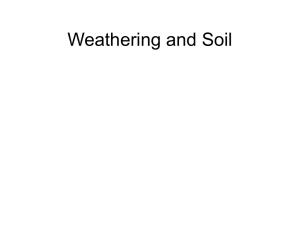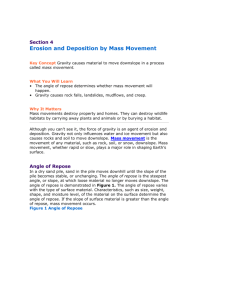The Earth`s Changing Surface
advertisement
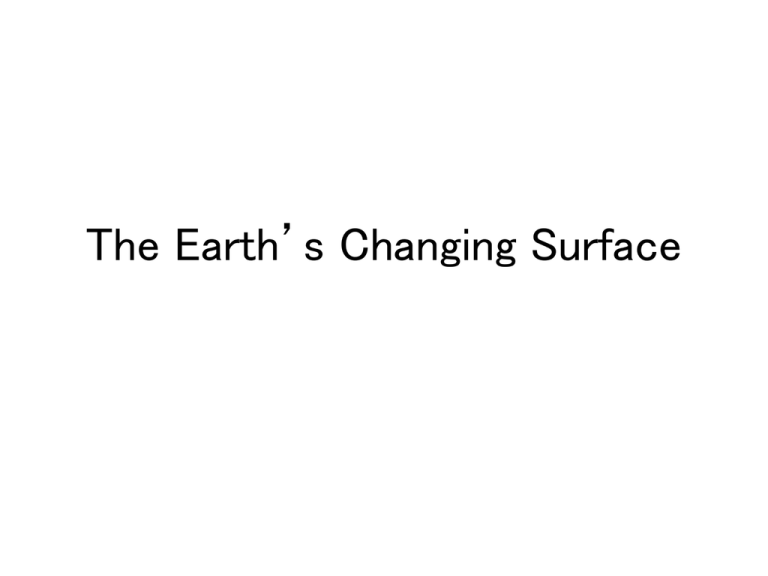
The Earth’s Changing Surface What is Weathering? • Weathering is the chemical and physical processes that break down rock at Earth’s surface. • There are two types of weathering: Chemical & Physical Mechanical (Physical) Weathering • The type of weathering in which rock is PHYSICALLY broken down into smaller pieces. Ice Wedging • Repeated freezing and thawing of water in cracks of a rock. • Water seeps into cracks in rock and then freezes. • Rock is pushed apart by frozen water. Plant Growth • Roots act as wedging, causes cracks in the rock. • Roots exert constant pressure on rock. • Eventually breaking them apart. Chemical Weathering • The process that breaks down rock through chemical changes. Carbon Dioxide • Carbon Dioxide from the air dissolves in rainwater. – Result: water that contains carbonic acid. • A weak acid that reacts with minerals to break down the rock. • Limestone caves Water • Hydrolysis: the change in composition of minerals when they react chemically with water. • Leaching: process of transferring dissolved minerals to lower layers of rock Acid Rain • Rain contains carbonic acid. • Fossil fuels release sulfur dioxide and nitrogen oxides that react with water to form sulfuric acid and nitric acid. • falls to Earth as acid rain What is Erosion? • Erosion –the process by which natural forces move weathered rock and soil from one place to another. – It wears away parts of the Earth’s surface. – Gravity, running water, wind, waves, ice, underground water Erosion (cont.) • Sediment – is the material moved by erosion. – Sediment may consist of: • pieces of rock • soil • remains of plants and animals • Both weathering and erosion produce sediment. What is Deposition? • Deposition – drops weathered material (sediment) in new places. • The process by which material is laid down. – It changes the shape of the land by building new land forms. • Weathering, erosion, and deposition act together in a cycle that wears down and builds up the Earth’s surface. – Erosion and deposition are at work everywhere on Earth – The cycle of erosion and deposition is neverending. Mass Movement • Gravity is the force that moves rock and other materials down hill. – Gravity causes mass movement • The different types of mass movement include landslides, mudflows, slump, and creep. Mass movement can be fast or slow. Landslides • This is the most destructive type of mass movement. – Landslides occur when rock and soil slide quickly down a steep slope. • Some landslides contain huge amounts of rock and soil, some only contain small amounts of rock and soil. Mudflows • A mudflow is the rapid downhill movement of a mixture of water, rock, and soil. • Mudflows often occur after heavy rains in a normally dry area. • Under certain conditions, clay soils suddenly turn to liquid and begins to flow. – An earthquake can trigger both mudflows and landslides. Slump • A mass of rock and soil suddenly slips down a slope. – The material in a slump moves down in one large mass. Creep • Creep is the very slow movement of rock and soil. – Creep is so slow you can barely notice it. • Bent trees • Cracked roads • Leaning poles/fences



